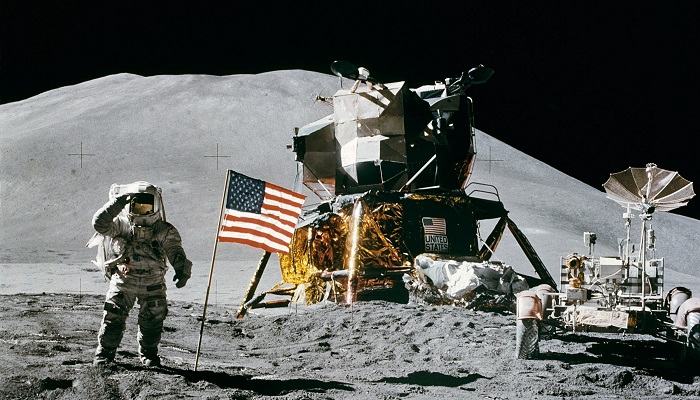
Do you ever wonder what happens in space? If so, you may have brought a telescope to explore the stars in your backyard.
Just over a decade ago, we marveled at how Neil Armstrong was courageous enough to be the first person to walk on the moon. But with companies such as SpaceX and Virgin Galactic, it looks like a trip outside of Earth is not far off for non-astronauts. Today, April 12, marks the International Day of Human Space Flight. It’s also the 63rd anniversary of when Yuri Gagarin, a Soviet cosmonaut, first orbited space.
If you are looking to hear some interesting facts about travelling outer space, here are 14 of them:
1. Astronauts don’t use pencils
Pencils contain graphite, which is a safety hazard. The lead can break off, and the dust can fall elsewhere. Moreover, wood and lead are flammable in pure oxygen environments. The solution: a Space Pen invented by Paul Fisher which compresses nitrogen for ink.
2. William Shatner is the oldest person to travel to space
Shatner was 90 years old when he went on a suborbital spacecraft developed by Blue Origin. Although the flight lasted only 10 minutes, Shatner was able to live his Star Trek dreams.
3. The first artificial satellite launched in 1957
On October 4, 1957, the USSR launched the first artificial satellite – Sputnik 1.
4. The first animal to explore outer space was a dog
Laika, a stray dog, was the first animal to travel to space, one month after the artificial satellite launched. However, the story was tragic: She died shortly after take-off, but the Soviet government kept it a secret. She’s not the last dog to leave the planet either – a couple of other dogs have travelled to outer space and survived.
5. Peggy Whitson currently holds the world record for spending the most time in space
Whitson rounded off a total of 665 days of working and living in space in 2017.
6. The International Space Station has a volume larger than two Boeing 747 jetliners.
On Earth, the ISS would weigh around 1 million pounds. There are laboratories and living facilities for astronauts.
7. NASA spent US $23 million to upgrade the toilet on the ISS in 2018
In 2000, the toilets on the station were highly gendered: You had to stand up, which is easier on men. The new toilet is a vacuum toilet, which consists of a hose with a funnel and a small raised toilet seat.
8. Recycling to another extent
After using the washroom, the astronaut’s pee is stored and recycled into water. After all, it’s hard to transport water from Earth.
9. NASA recently showcased their new spacesuits
On March 15, 2023, NASA revealed the prototype spacesuits for the Artemis III mission, which is scheduled for 2025. This trip will include the first astronaut of color to walk on the Moon. Axiom Space designed the suit, which focuses on thermal requirements. This design has more joints, which will help the astronauts perform their daily activities. The helmet includes an HD video camera on the side.
10. Snoopy is the safety mascot for NASA
You heard that right — Charlie Brown’s best friend is also NASA’s best friend. The agreement started when NASA approached Charles Schulz, the creator of Peanuts, after the crash of Apollo 13. They wanted Snoopy to be part of their safety materials, and Schulz agreed.
11. Space tourism? Nothing new
The first passenger, Dennis Tito, was an American engineer. He paid $20 million to go with two Russian cosmonauts.
12. There is space beer
Vostok is a project by 4 Pines and Saber Aeronautics. Both of these companies are trying to put beer into space for tourism. The first experiment was conducted in July 2010, and underwent some procedures for the correct bottle design.
13. Never cry in space
Chris Hadfield demonstrated how tears are difficult to clean up. In fact, it leads to a big water bubble.
14. Space telescopes could be built in space
Since there’s no gravity, 3D printers can create large-scale structures instead of launching them from Earth. Microgravity allows these materials to grow.
Space is an interesting place to explore because there are so many unanswered questions. Perhaps, in 50 years, space tourism may be cheaper and all of us can see the cosmos for once. And who knows – maybe we’ll bump into an extraterrestrial.
Feature Image by Pixabay on Pexels